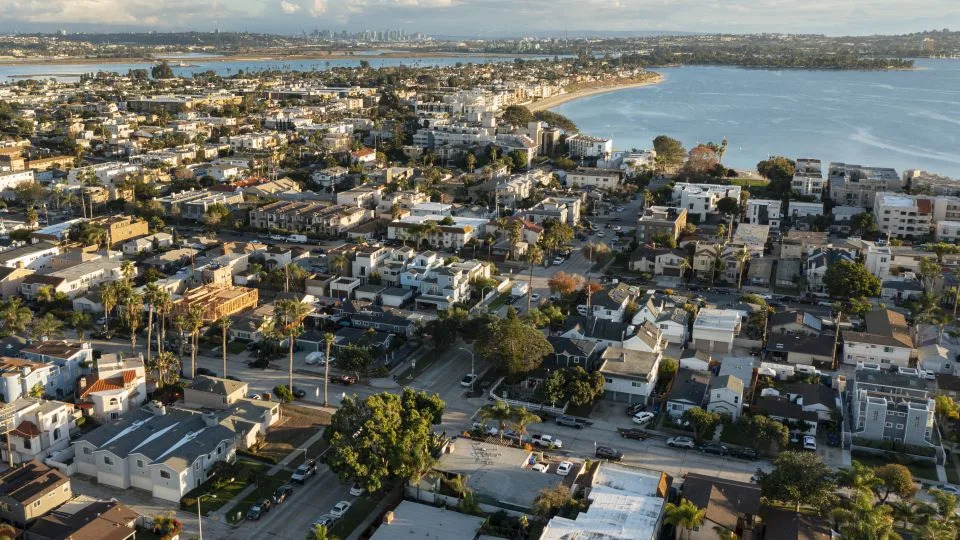What’s propping up inflation? Blame housing
Kayla Kataska began shopping for her first home last month — and she’s already had to adjust her expectations.
Although Kataska and her husband recently moved from Southern California to the relatively more affordable city of Lake Mills, Wisconsin, they’ve realized their dream home may come with a heftier price tag than they previously imagined.
“We’re still early in the process, but we’re learning that the type of house I thought we could afford is significantly more money than what we can actually afford,” Kataska said.
Home prices across the country are still rising at a faster clip than overall inflation, causing sticker shock for house hunters like the Kataskas.
Shelter inflation, which is a measure of the average cost of housing in the US, rose to 4.8% year-over-year in December, according to the latest Consumer Price Index , the most commonly used measure of inflation. It’s a big reason the broader inflation rate hasn’t fallen back down to the Federal Reserve’s ideal target of 2%.
Last fall, when the Fed began slashing interest rates from a bruising 23-year high, some experts were prepared to declare victory in the central bank’s fight against a historic bout of inflation. In the months since the Fed’s first rate cut in September, though, the US government’s two main measures of inflation, the CPI and the Personal Consumption Expenditures price index, have remained stubbornly elevated.
Economists expect January’s CPI, set to be released on Wednesday, to be unchanged from last month at 2.9% on an annual basis. Closely watched core CPI, which excludes energy and food, is expected to be 3.1%.
Housing is “where most of the remaining gap is,” Fed Chair Jerome Powell said of inflation last month.
Sticky shelter inflation
CPI measures housing inflation in a way that may seem peculiar to non-economists. The two primary subsets, which both fall under the shelter inflation category, are “rent of primary residence” and “owners’ equivalent rent of residences” (which measures how much it would cost homeowners to rent the house they live in).
The two measure inflation for homes both owned and rented in the US. Together, they make up more than 33% of overall CPI, so when inflation stays persistently high in the housing sector, overall inflation stays elevated, too.

“Proportionally, it’s a large part of the market basket,” Erica Groshen, former Commissioner of the Bureau of Labor Statistics, which administers CPI, said of housing inflation’s input into the index. “And it’s certainly more sluggish. There’s no doubt about it.”
Inflation in rent tends to move more gradually on the way up and the way down, due to the fact that people tend to lock in a fixed rental rate in one- to two-year increments, said Neil Mehrotra, a policy adviser at the Minneapolis Fed.
“Some of the inflation we’re experiencing in rent was actually happening 12 to 18 months ago, but it’s only now filtering through the official series,” Mehrotra said.
Housing is a smaller input in the Fed’s preferred measure of inflation, PCE, though, making up less than 20% of the index.
A long-awaited slowdown?
The impact of rising home prices has been felt across most of the country: A recent report from the National Association of Realtors found that 89% of metro areas registered single-family existing home sales prices gains in the fourth quarter of 2024.
That’s partly due to elevated mortgage rates , which have incentivized homeowners who locked in ultra-low rates to stay put, meaning fewer homes have been put up for sale. Chronic underbuilding has also led to a shortage of new homes, driving up prices even further.
Mortgage rates, which have stayed high despite the Fed’s recent rate cuts, have also cut into affordability. The average 30-year fixed mortgage rate was 6.89% last week, according to Freddie Mac. While that’s slightly below the recent peak of 7.04% hit in January, it’s higher than average mortgage rates were for 14 years until 2022.
There have been signs that prices have leveled off in the rental market: The median asking rent fell 0.3% year over year in December to $1,594, according to data from real estate platform Redfin. That’s the lowest level since March 2022.
“Housing is still a big piece of inflation,” Neel Kashkari, president of the Minneapolis Fed, said in an interview with CNBC last week. “We have a lot of confidence looking at the new leases. It takes a couple years for that to roll through the actual inflation data, so that should be helping us bring inflation back down.”
Aditya Bhave, a senior US economist at Bank of America, said he thinks it’s “almost a given” that housing inflation will fall year over year in the near future, though he cautioned that it didn’t necessarily mean that the Fed’s war with inflation was entirely won. Some of President Donald Trump’s new policies, such as broad-based tariffs , mass deportations and expansive tax cuts , could reignite inflation in the future, including in the housing sector.
For now, though, “this is the long-awaited slowdown in housing inflation that is finally playing out,” Bhave said.
For more CNN news and newsletters create an account at CNN.com

